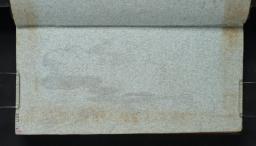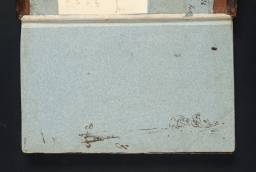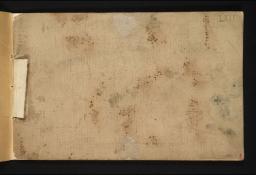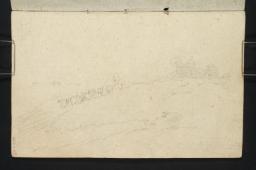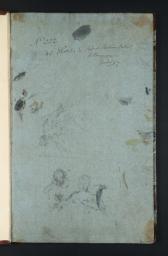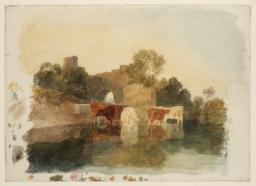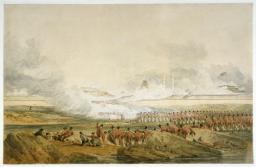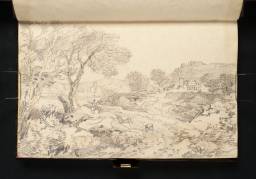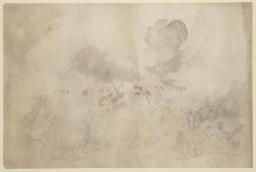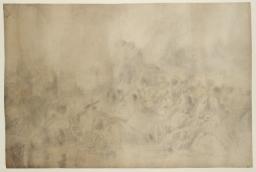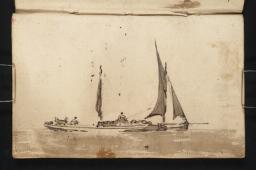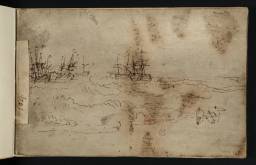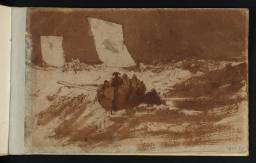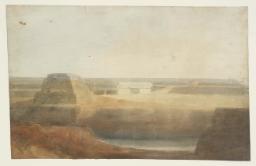History Painting c.1799–1807
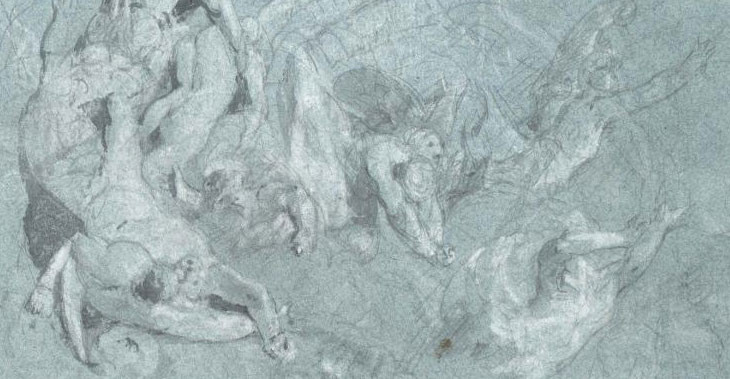
From the entry
The momentum of his career brought Turner rapidly to a position of pre-eminence in his profession. In 1799 he was accorded Associateship of the Royal Academy, and he became a full Academician in 1802. While his output of watercolours hardly slackened, by the end of the 1790s he was devoting much time to the production of pictures that would earn him a reputation as a painter of the highest seriousness. This entailed embracing historical and biblical subjects, while at the same time he explored ways of investing his architectural and topographical work with some of the same qualities. For instance, a large watercolour view of Caernarvon Castle exhibited at the Academy in 1799 (private collection), reflects the impact on him of harbour scenes by the French artist Claude Lorrain (1604/5–1682) that he had seen in the collection of the banker John Julius Angerstein. Another view of Caernarvon (Tate D04164; Turner Bequest LXX M), shown at the same venue in the following year, is equally a ‘watercolour Claude& ...
Studies for Pictures sketchbook c.1799–1802
D03994–D04096, D04098–D04151, D40585–D40590
Turner Bequest LXIX 1–131a
D03994–D04096, D04098–D04151, D40585–D40590
Turner Bequest LXIX 1–131a
Egyptian Details sketchbook c.1799–1800
D03833–D03841, D03843–D03973, D40780
Turner Bequest LXVI 1–132
D03833–D03841, D03843–D03973, D40780
Turner Bequest LXVI 1–132
The momentum of his career brought Turner rapidly to a position of pre-eminence in his profession. In 1799 he was accorded Associateship of the Royal Academy, and he became a full Academician in 1802. While his output of watercolours hardly slackened, by the end of the 1790s he was devoting much time to the production of pictures that would earn him a reputation as a painter of the highest seriousness. This entailed embracing historical and biblical subjects, while at the same time he explored ways of investing his architectural and topographical work with some of the same qualities.
For instance, a large watercolour view of Caernarvon Castle exhibited at the Academy in 1799 (private collection),1 reflects the impact on him of harbour scenes by the French artist Claude Lorrain (1604/5–1682) that he had seen in the collection of the banker John Julius Angerstein. Another view of Caernarvon (Tate D04164; Turner Bequest LXX M),2 shown at the same venue in the following year, is equally a ‘watercolour Claude’, but seems to have been undertaken together with the unfinished Tate D04168 (Turner Bequest LXX Q) as a pair of North Welsh views on the theme of ‘Peace and War’, illustrating the conquest of Wales by Edward I and taking as their text, for ‘Peace’ some lines of verse by Turner himself included in the 1800 Royal Academy catalogue (among the first that he published), and for ‘War’ Thomas Gray’s famous 1757 ode The Bard. For more on these themes, see the ‘North Wales 1799–1801’ section of this catalogue.
Turner was also engaged on marine subjects, from the lost painting of the Battle of the Nile, at 10 o’clock when the L’Orient Blew Up, from the Station of the Gun Boats between the Battery and Castle of Aboukir,3 exhibited at the Academy in 1799, to a dramatic scene of North Sea fishermen in the style of Willem van de Velde the Younger (1633–1707), Dutch Boats in a Gale: Fishermen Endeavouring to Put their Fish on Board (‘The Bridgewater Seapiece’), shown at the Academy in 1801 (private collection, on loan to the National Gallery, London).4
His first visit to the Continent in 1802, and in particular his experience of a wide range of Old Master paintings in Napoleon’s gallery of looted pictures at the Louvre, extended Turner’s repertory by exposing him to Titian (active about 1506–died 1576), Nicolas Poussin (1594–1665), Ludolf Bakhuizen (1630/1–1708) and others. His responses to these are recorded in the Studies in the Louvre sketchbook of that year (Tate; Turner Bequest LXXII; see the ‘Switzerland 1802’ section).
The Calais Pier sketchbook (Turner Bequest LXXXI), which used over a number of years round the turn of the century, contains many splendid studies for a range of tributes to those masters, and embodies in the media he chose, of black and white chalks on blue paper, a profound homage to the methods of those painters when preparing their subjects. Other sketchbooks, like Academies and Studies for Pictures (Turner Bequest LXXXIV, LXIX) are much smaller but crammed with intensely felt ideas for historical and marine subjects.
How to cite
Andrew Wilton, ‘History Painting c.1799–1807’, November 2013, in David Blayney Brown (ed.), J.M.W. Turner: Sketchbooks, Drawings and Watercolours, Tate Research Publication, April 2016, https://www

